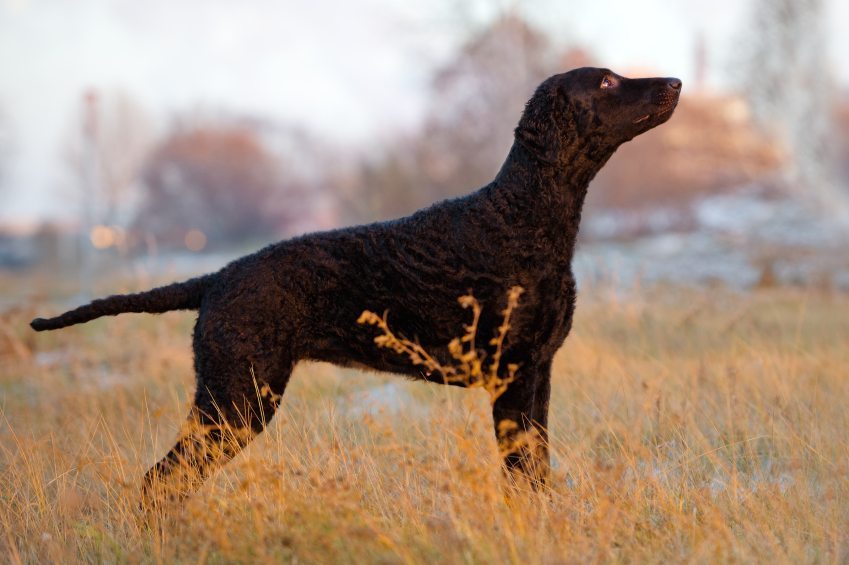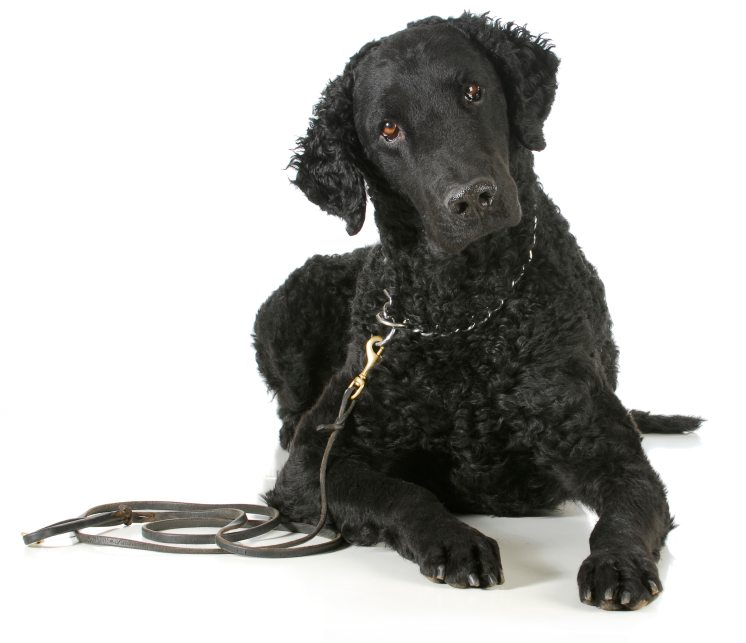
The Curly Coated Retriever is a great dog for families. Don’t let the curls fool you, this is a sturdy, powerful and courageous breed with endless amounts of energy perfect for working and play time. Before you welcome this fine breed into your home, learn more about its appearance, history, personality, health concerns, grooming requirements and what family dynamic they work best for.
Physical Traits
Affectionately called “curly” the Curly Coated Retriever Breed is extremely distinctive. Their coats are made up of dark, oily, tight curls. They are generally twenty three to twenty six inches tall, with a long spine and shorter legs. Their eyes are almond shaped with black or brown pigments. Curly’s ears are small and lay close to their head and their expressions are smart and sharp.
The History of Curly
The origins of the Curly Coated Retriever Breed are, indeed, mysterious. The now-extinct English Water Spaniels could have been the great, great grandfathers of Curly as well as other retriever-type dogs like Poodles. In 1860, Curly was introduced to to England where they became the first breed to be used for retrieving. They were even enlisted to fight in World War One and World War Two where they almost died out. In 1907 they were brought to the United States and became extremely popular in the 1960s. Ten years later, the Curly Coated Retriever Club of America was founded.

Temperament
Give Curly a task. Curly Coated Retrievers are alert, confident hard workers. They can go on working forever because they mature more slowly than other breeds. Curly will have the energy of a puppy for at least three years. If you would like your Curly to be social with friends in family, introduce him to as many people as possible at once. Curly tends to be shy in the beginning but he is always ready to please.
Health Concerns
Although the Curly Coated Retriever is generally healthy, like all breeds they are prone to certain diseases. Curlies are have a history of Elbow Dysplasia, Hip Dysplasia, Persistent Pupillary Membranes, Ectropion, Distichiasis, Entropion, Progressive Retinal Atrophy, Pattern Baldness, Retinal Dysplasia, Adenocarcinoma, Lymphosarcoma, Glycogen Storage Disease, Hemanglosarcoma, Mast Cell Tumors, Melanoma, Fibrosarcoma, Osteosarcoma and Gastric Dilation-Volvulus.
Grooming
Grooming your Curly Coated retriever is so easy, you won’t have to see the groomer more than twice a year. Grooming is easiest when you start young. Reinforce that this is a relaxing experience so you Curly reacts well. Keep his nails trimmed and watch for any bad smells. Curlys don’t normally smell bad. Whenever they start to shed, give him a bath to keep his coat from drying out.
Family Dynamics
Curlies are great for families, especially with older children. Younger children may be overwhelmed by the dog’s energy but if the breed is provided with plenty of exercise the dog can be calm in a home environment. Families who enjoy lots of out door activities will love this breed. The breed excels in K9 competitions. So this breed is great for those interested in dog agility and flyball.
Photo Credit: istockphoto.com









